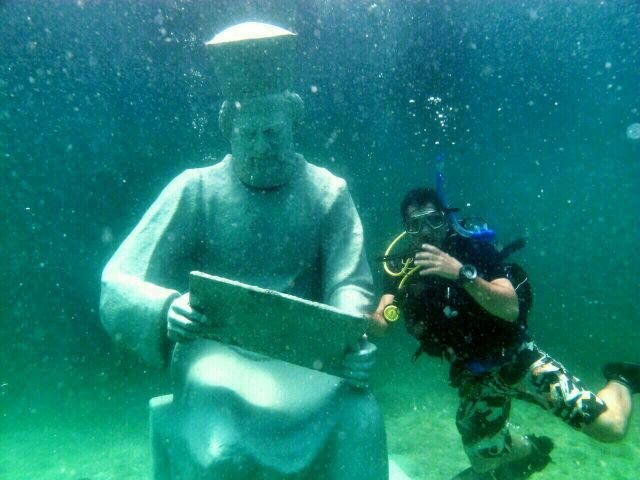Persian Gulf’s underwater museum: an environmental threat?

TEHRAN – An underwater museum has been suggested to be designed in the Persian Gulf to prevent coral reef habitats from extinction due to over-fishing and over-visiting, but the question is that do these museums cause threats to the marine environment?
An old wrecked plane has been transferred to Kish Island to be sunk underwater as part of an ocean theme park, but field research has been conducted to ensure that its implementation does not harm the environment.
With the tourism and travel causing damages to the coral reefs, some countries around the world decided to bring potentially damaging amateur divers to see fascinating underwater artwork rather than the natural reefs, while with so much emphases today on removing objects from the ocean, such as plastic litter, is placing sculptures in it harmful?
Davood Mirshekar, deputy chief of the Department of Environment (DOE) for marine ecosystems, stated that any structure, material or equipment that is planned to be transported under the sea must be compliant with the London Convention (Convention on the Prevention of Marine Pollution by Dumping of Wastes and Other Matter 1972), IRNA reported.
“If we want to use bulky objects such as aircraft and ships as artificial habitat on the sea bed, we must comply with a number of requirements and regulations, the most important of which is no pollution,” he highlighted.
Due to climate change and human involvement, natural habitats are being destroyed, so if artificial habitats are properly designed, there will be an opportunity to restore the natural ones, he said, adding, “We must manage to remove the pressure from natural habitats in the coming years and guide the tourists to artificial habitats.”
“We welcome the creation of artificial spaces, provided that they do not conflict with natural habitats, especially coral reefs, if being properly managed, placed and made of suitable materials can even be considered as major habitats and in the future, by attracting a number of species, will become increasingly important.”
Referring to the responsible body for determining the compatibility of the statues’ material with the environment, Mirshakar noted that this issue is also up to the DOE, the Ports and Maritime Organization.
He also added that plane was inspected and have been cleared of any contamination that could lead to environmental problems, in fact the equipment that could potentially cause such problem were discharged and only the metal part of the aircraft remained.
“Such measures contribute to the conservation of natural ecosystems, especially the coral reefs habitat in the region, so we strive to promote ecotourism on the island by preserving the whole marine environment,” he stated.
Referring to the statues drowned in Kish Island, he noted that those are old and not licensed by the DOE, however, Kish Island has its own department of environment and must have been done with their permission.
Responding to the question that the Persian Gulf is a semi-closed sea with a shallow depth and long water circulation and may be hurt in greater dimensions, he said that “If it complies with the rules and regulations of the London Convention and the Department of Environment, it would not be harmful, so we demand that all such activities be carried out under the Department of Environment’s supervision.”
Finally, if the sculptures are environmentally friendly, there is no threat to the water or ecosystem, he concluded.
FB/MG
Leave a Comment